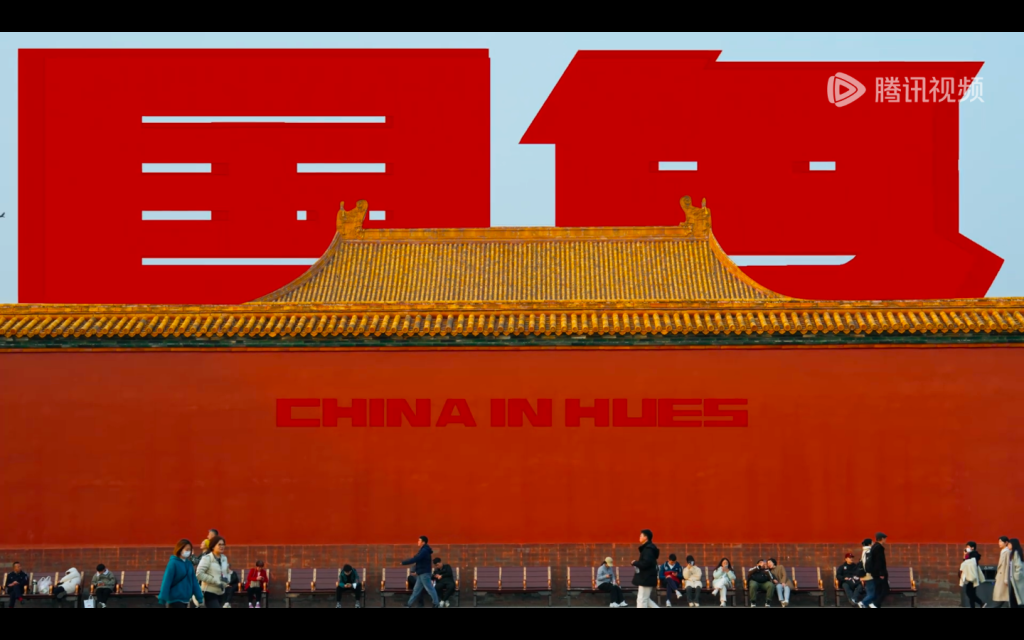
The new work of documentary director Chen Xiaoqing's team, the traditional color humanities documentary "Searching for Colors of China", was launched on April 11. This is a new attempt made by Chen Xiaoqing, who has been shooting food documentaries for more than ten years. The crew spent a year traveling in many cities and villages in China, recording many traditional color techniques and stories related to colors.

Screenshot of "Searching for Colors in China"
"Searching for Colors of China" hopes to explore the Chinese wisdom in colors. The documentary constructs a narrative framework with six theme colors, and each episode focuses on the unique cultural connotation of a traditional Chinese color. Among them, "Glorious National Colors" shows how the exclusive colors of the emperors have evolved into a folk bond; "Mysterious Face" reveals the wisdom of the Chinese people in communicating with the world through colors; "Her Color Number" breaks the stereotype and explores the deep connection between women and colors; "I See Green Mountains" presents the humanistic transformation of natural colors; "Colorful Countryside" captures the vivid colors of folk life; "Where to Find Strange Colors" explores alternative existence in the traditional color spectrum.
The first episode, "The Brilliant National Colors", starts with the color of the emperor - yellow, and talks about how to obtain different shades of yellow from various plants, as well as the extremely difficult craftsmanship of kesi silk; from the majestic Forbidden City to the world of fireworks, it then tells the story of red, which has such far-reaching influence in China that even the royal family cannot enjoy it exclusively, and from red to the calligrapher Hua Ge. Similar to the tension of red in the folk, plaques written by Hua Ge are left everywhere on the streets of Hong Kong. In addition, he has also written titles for nearly a hundred movies. His calligraphy always complements the stories in the movies and various Hong Kong restaurants.

Screenshot of "Searching for Colors in China"

Screenshot of "Searching for Colors in China"
The figures, faces, and hand details of the craftsmen are interspersed with the high-concentration colors, utensils and other exquisite details on the full screen. They constitute the most story-telling and emotional part of the documentary. In a recent sharing event, Hua Ge also came to the scene. He said that he has been writing for decades and is already 77 years old this year. "But I am passionate about Chinese culture. For example, I write the title of a movie. Each movie needs a different theme. If it is the same theme, you won't have that feeling. The theme of each industry is also different. For example, hotels and inns, the words written should give people a feeling of being at home. But for example, a martial arts hall should use the Northern Wei style, which gives the feeling of swords and spears. If it is a hair salon, it has a Western artistic feeling."
Chen Xiaoqing said: "From Hua Ge's calligraphy, we seem to be able to see the spirit of an era, with heads held high and eyebrows confident, and daring to fight and struggle."

Screenshot of "Searching for Colors in China"

Screenshot of "Searching for Colors in China"
Next came the colors that accompany various traditional Chinese objects - the blue of blue and white porcelain, and the black and red of lacquerware.
"Searching for Colors of China" not only explores the deep connection between colors and Chinese lifestyles, but also comprehends the unique Eastern philosophy. For example, in the first episode, the five colors of blue, red, yellow, white and black are the five most important and oldest representatives of "traditional Chinese colors". They represent a concept of the five elements running and the unity of man and nature.

Screenshot of "Searching for Colors in China"
The last part of the first episode explores the Chinese concept of time. The Chinese are accustomed to solidifying perishable and short-lived things into eternity and giving them names.

Screenshot of "Searching for Colors in China"
According to executive director Guo An, the team selected four of the most appealing cases from 17 candidate stories to shoot the first episode "Glorious National Colors". Using animation, layout design and other expressive techniques, the traditional color names such as "Xuan" recorded in ancient books were transformed into vivid dynamic images. During the shooting process, the team paid special attention to the relationship between color and environment, such as using carefully designed warm light to set off the classical beauty of blue and white porcelain, thereby giving traditional colors a richer narrative connotation.

Screenshot of "Searching for Colors in China"
Chen Xiaoqing compared the cultural attributes of food and color, believing that both are sensory windows connecting people to the world. "Searching for Colors of China hopes to use visual language to awaken the public's perception of traditional aesthetics and help spread Chinese culture."